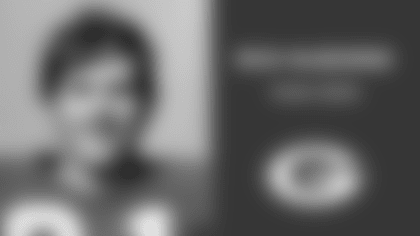The expansion of the south end zone will add roughly 6,600 seats to Lambeau Field beginning with the 2013 season, and the Packers won't be asking for any taxpayer dollars to pay for it.
That's the crux of the stadium development plans announced by the Packers on Thursday. The expansion of the south end zone will conclude a three-year redevelopment phase of the stadium that began with the installation of a new sound system this year.
For 2012, new video boards will be installed and a new tower will be constructed in the north end zone that will include a new entrance gate and outdoor rooftop viewing platform. The rooftop platform also will be available for special events on non-game days.
Once the new video board is in place in the south end zone next year, the framework for the entire expansion will be in place, with the project being completed in 2013. The 6,600 new seats, all outdoors, will be tiered vertically in four levels above the stadium bowl and will rise as high as the current banks of lights in that end zone.
The new seating, which will push Lambeau's capacity over 79,000 and move the stadium up from 11th to fourth-largest in the NFL, will stretch from the current press box to the suites on the stadium's east side, effectively closing off the "opening" in that end zone that has existed since the 2003 Lambeau renovation.
A groundbreaking is slated for Sept. 1 to signal the start of the north and south end zone projects, which will cost around $130 million. Loans, plus possible user fees for new season-ticket holders and potentially another stock sale, will cover that cost. Miron Construction of Neenah, Wis., has been selected as the general contractor.
"We're really investing in Lambeau Field and building on the successful renovation of 2003," Packers President/CEO Mark Murphy said. "This will help keep the stadium up to date in terms of amenities that we see in the newer stadiums.
"For us to remain competitive, we need to continue to grow local revenue, and this will help us."
Most of the new seating in the south end zone will be similar to general seating in the stadium bowl with access to general concession areas, except the seats will have backs and arm rests. Some will be premium seats, in smaller sections and with access to higher-level amenities.
A new south entrance gate with escalators and elevators will be part of the construction as well. Combined with the addition of the north tower for premium-seat holders, the two new gates should ease congestion getting in and out of the stadium.
Murphy cited the league's new collective bargaining agreement with the players' union, which guarantees labor peace for the next 10 years, as key to allowing the team to move forward with these plans.
"This is something we've been working on for over two years," Murphy said. "For the future of the organization, this is a crucial step."
Unlike the '03 renovation, the Packers will not be seeking taxpayer assistance for the project. The entire three-year redevelopment will cost around $143 million, with the north and south end zones accounting for $130 million of that.
Money from the Green Bay/Brown County Professional Stadium District's capital improvement fund, which includes leftover user fees from the previous renovation, covered 80 percent of the cost of the new sound system and will pay for the new scoreboards.
The Packers are arranging to finance all the costs for the end zone projects. In addition to borrowing money through traditional loans, the Packers anticipate a user-fee program similar to that used for the '03 renovation.
The organization is also considering a stock sale and will seek NFL approval to offer one. Additional funding options from the league will also be explored, but stadium improvement programs that may become available to teams through the new CBA have not yet been formalized.
The Packers have not had a stock sale since 1997, which was the franchise's fourth stock offering and the only one in the last 60 years.
Filling the 6,600 new seats will require a two-step process. First, current season-ticket holders in the stadium bowl will be given an opportunity to move some or all of their seats – but no more than they currently possess – to the new south end zone. Those who have held their season tickets the longest will be given priority.
Then, patrons on the season-ticket waiting list will have an opportunity to purchase any seats remaining in the south end zone or any that have opened up in the stadium bowl. The current waiting list has more than 88,000 names.
Ticket prices and possible user fees for the new south end zone have not yet been established, though it's expected they'll be higher than for those in the stadium bowl. "Green" and "Gold" packages will remain part of the ticket distribution for general seating in the new south end zone, but not for any premium seating.
User fees for stadium bowl seats are $1,400 for the Green package and $600 for the Gold package. The top price on a bowl ticket is $87.
If user fees are employed, current season-ticket holders in the stadium bowl who move to the south end zone will only have to pay the difference in the user fee – the equivalent of getting a refund of the previous user fee and then paying the new one.
"The project is self-funded but we feel very confident we have a high level of demand and our waiting list is very strong," said Jason Wied, vice president of administration/general counsel. "We did not want to add suites or a high percentage of premium seats. We really wanted to focus a lot of attention on our regular waiting list."
Wied added that the new CBA makes it incumbent upon teams to drive local revenue. The new seats will result in another 66,000 tickets being sold at Lambeau Field per year, nearly the equivalent of an additional home game, or roughly $11 million in annual community-wide economic impact.
"By creating more space," Wied said, "we're providing an opportunity to get people in the stadium who otherwise wouldn't have a chance."
To see renderings of the north and south end zone projects, click here.















